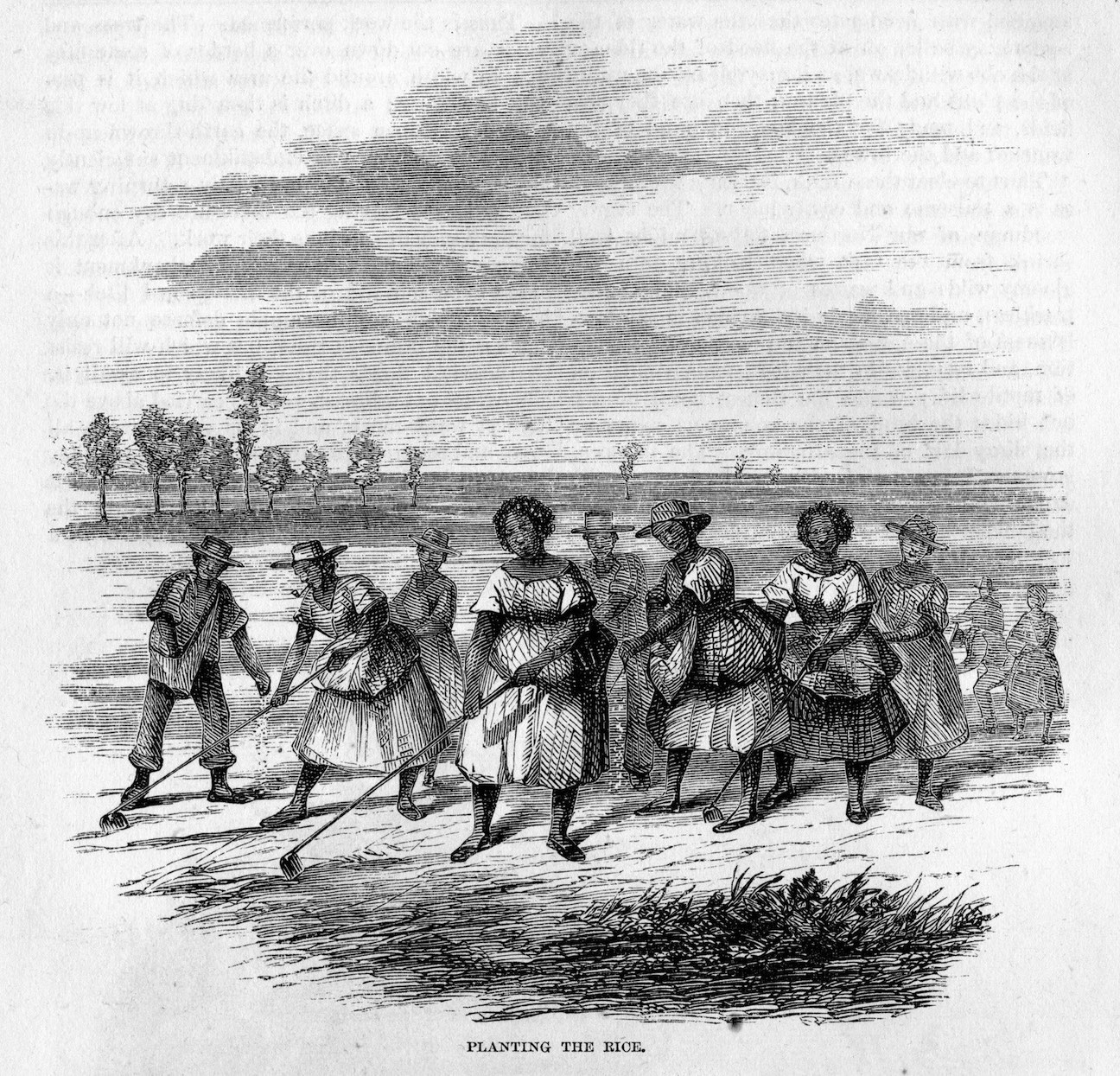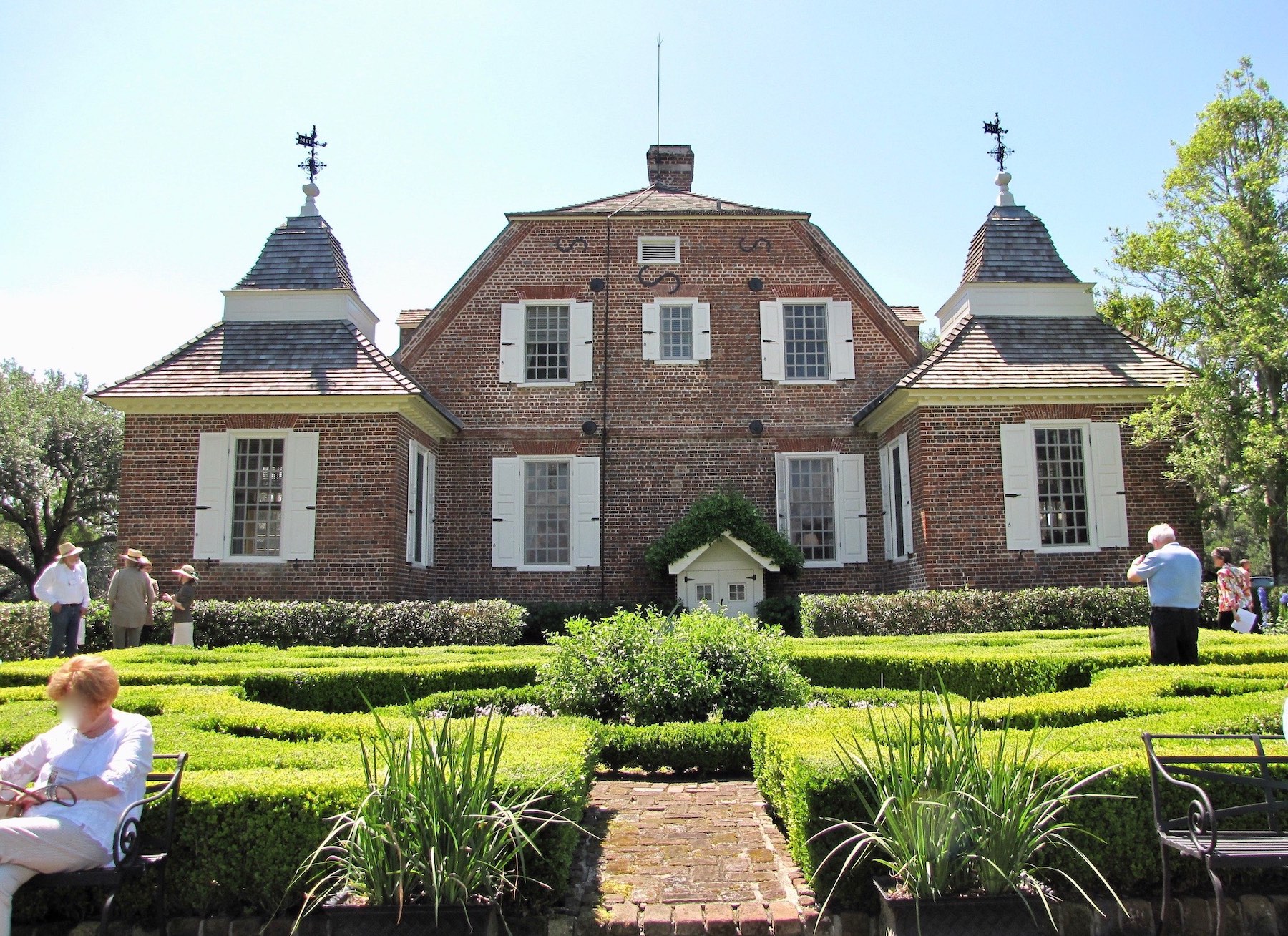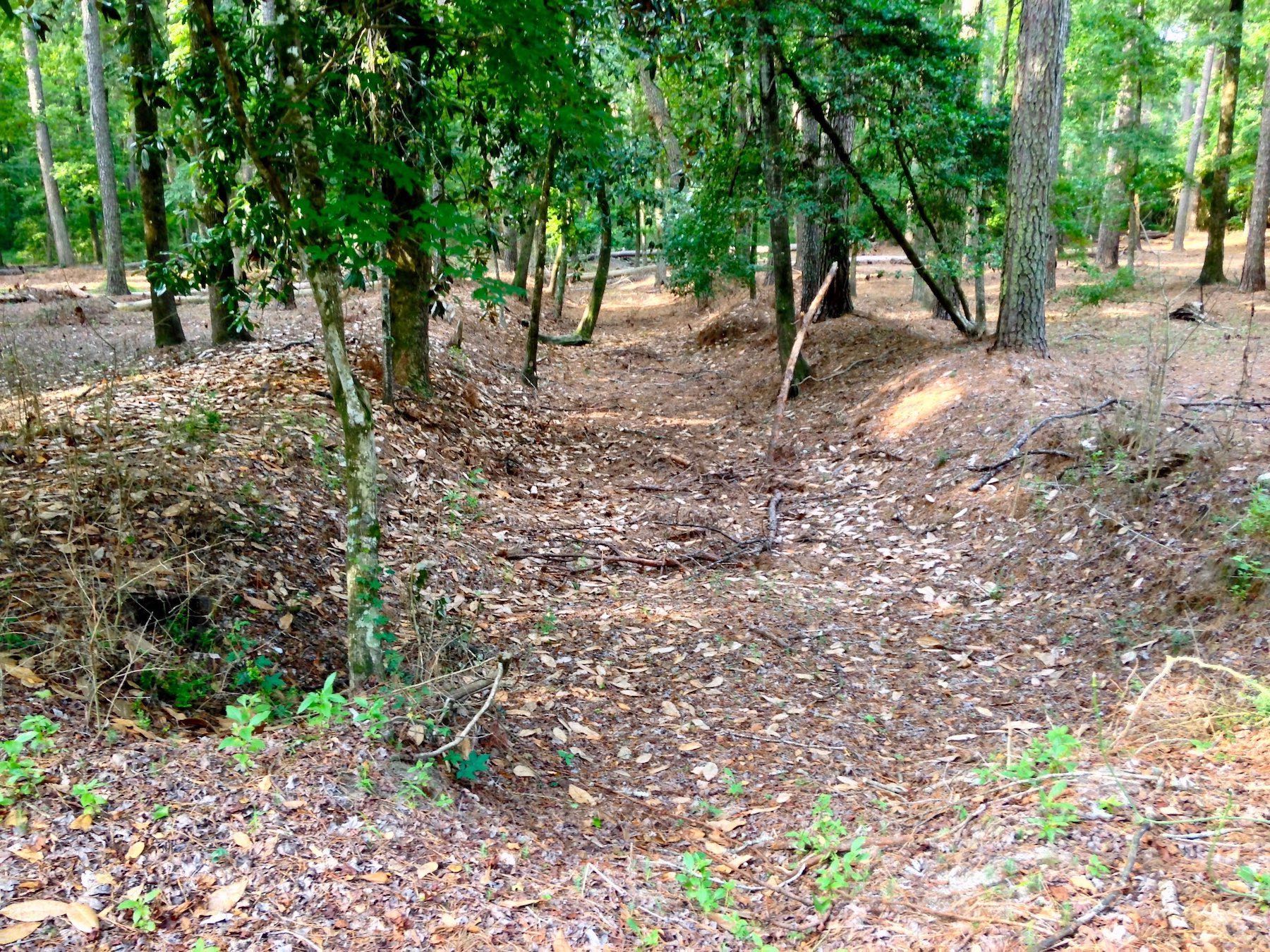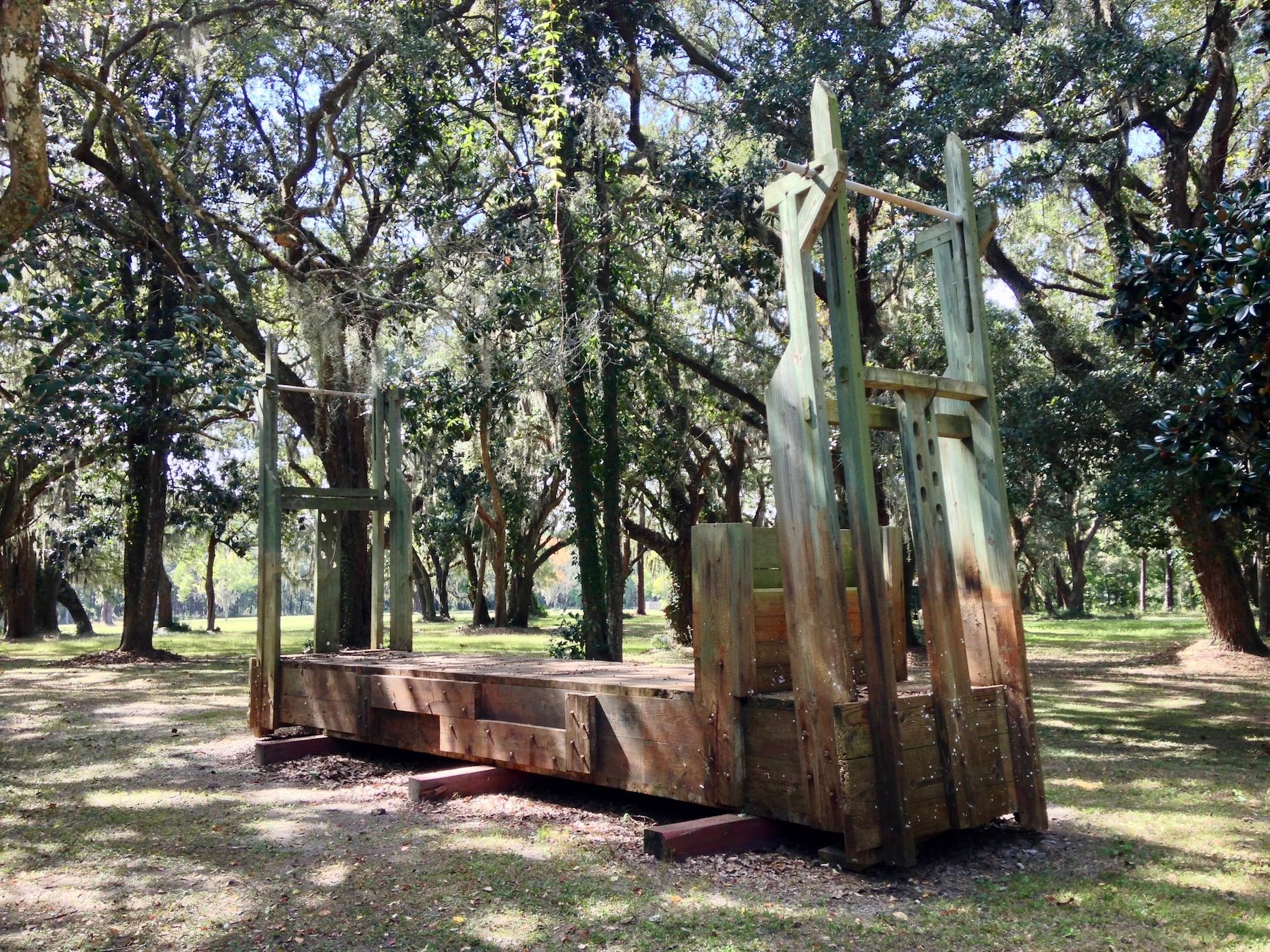
If you’re a relative newcomer to this part of the world, you might wonder why Lowcountry natives spend so much time talking about rice and its relationship to the history of South Carolina. The great volume of publications and conversations about rice reflect the grain’s importance in our community’s shared history, from the earliest days of the Carolina Colony to the present. Rather than burden you with a chronological overview of an epic narrative, I’ve boiled this delicious topic down to ten talking points that you might use when you break bread with friends and family.
Several years ago, I had the pleasure of collaborating with the artist Jonathan Green on a series of projects involving rice and rice history in the Lowcountry of South Carolina. His enthusiasm for this topic is infectious, and his basic premise is intriguing. Rice, says Jonathan, is the epitome of the shared nature of our history in South Carolina. Rice is the nexus of a myriad of traditions and stories, each of which forms a part of our shared identity as South Carolinians. Just about everything and everyone we love in South Carolina’s deep and sometimes-painful history, has some connection to the story of rice in this state. In an effort to build a better sense of togetherness in our communities during this age of divisiveness and prejudice, Jonathan suggests we should embrace rice as our common ground, a topic around which we can build a productive conversation, and something with which we can quite literally share a meal. In the spirit of thanksgiving, therefore, I invite you to consider giving thanks for rice and all that it did—both good and bad—to forge the community we now inhabit today. In an effort to facilitate conversations about rice, I’ve assembled a list of talking points in roughly chronological order. I call this list, “Ten Things Everyone Should Know about Lowcounty Rice.” These ten items are my personal, subjective choices, of course, but they are based on my experiences in examining historical documents, talking with experts, reading their books, and years of talking to audiences who are curious about South Carolina history. I invite you to consider my top-ten list, and then perhaps create your own.
1. Rice defined early South Carolina.

How did rice change our way of thinking? Think about this: The cultivation of rice is a backbreaking business that requires one to work long hours in the direct sun, frequently while standing in either water or mud, surrounded by mosquitoes, horseflies, snakes, and even alligators. In the earliest days of rice experimentation in South Carolina, European colonists decided that white folks were simply not cut out for this kind of labor, but—they told themselves—dark-skinned Africans were perfectly suited to this sort of difficult and dangerous work. Rice became a major crop here in the very early 1700s. In the three decades prior to the ascendency of rice, South Carolinians had imported a relatively small number of enslaved Africans by way of the Caribbean islands. Once rice gained a foothold as a viable, profitable crop in South Carolina at the beginning of the eighteenth century, however, that racial way of thinking about labor paved the way for the large-scale importation of enslaved people from Africa, while at the same time discouraging the immigration of poor white laborers from Europe. South Carolina’s long-term commitment to the cultivation of rice on an industrial scale thus not only defined our economy, but also permanently shaped the demographic profile of this state.
2. The origins of South Carolina rice are obscure.

In February 1715, a New Englander named John Thurber presented a petition to the South Carolina Commons House of Assembly, asking for a gratuity “for bringing the first Madagascar Rice into this Province.” The House then voted to give Thurber a reward of £100, but nowhere in the surviving records does it mention when Thurber brought this rice to Carolina. According to several rather vague, anecdotal accounts published later in the eighteenth century, the first Madagascar rice came to South Carolina in 1696, while others say it was definitely in the year 1704, but nobody mentions whether or not this was the work of John Thurber or another agent. More recently, anthropologists and historians have been debating the identity of the precise species and variety of the so-called “Carolina Gold” rice, and questioning whether Madagascar was truly its place of origin. In short, the jury’s still out on this matter, and we need further investigations, both of a documentary nature, and archaeological. Why archaeological? Think about this: deep in the mud of the old, abandoned rice fields in the Lowcountry, there are probably ancient grains imported from distant lands waiting to be discovered and studied.
3. Plantation owners capitalized on African rice knowledge.

At that same moment, at the turn of the eighteenth century, English colonists in America were just beginning to invest more heavily in the African slave trade, and suddenly there was a confluence of two streams of profit. The Carolina colonists needed to acquire a lot of labor and a lot of agricultural experience to turn rice into a profitable crop, and, in the growing population of West Africans brought to Carolina, they found a wealth of built-in experience. The people of the coastal regions of West Africa have been growing rice for millennia, and knew far more about the cultivation of this temperamental plant than any Englishman did. In short, the white folks who got rich from growing rice in colonial South Carolina owed their fortunes to the agricultural experience of their enslaved work force. The methods, tools, and language of Lowcountry rice have far more in common with the culture of coastal West Africa than with any European precedent. Recent books by Judith Carney and Etta Fields-Black, just to name two authors, prove this assertion beyond any doubt. The cultivation and the success of rice in South Carolina was a collaborative effort between two very different cultures, and that collaboration left a permanent stamp on the history of South Carolina.
4. There were two types of rice cultivation: inland rice and tidal rice.

Most, but perhaps not all, of the earliest rice fields in South Carolina, up to the period of the American Revolution, used a watering system that we call the “inland” method. This method drew fresh water from man-made reservoirs to flood embanked fields of rice at the requisite times. These reservoirs were filled by water from a nearby swamps or rivers, but sometimes they relied entirely on rainfall. In any case, rice plantations using the “inland” method were relatively small, perhaps a few hundred acres at most, because they required a great deal of labor to create and maintain the reservoirs, and also because they depended entirely on water sources that were sometimes plentiful and sometimes scarce. You can see the vestiges of inland rice fields in many of the tree-filled swamps that border local thoroughfares like Bee’s Ferry Road and Palmetto Commerce Parkway, just to name two examples.
Towards the end of the eighteenth century, a different method of water management began to gain ascendency in the Carolina lowcountry. The so-called “tidal” method uses the natural force of the tides to draw water onto, and then out of a rice field. Twice every day, on a predictable schedule, tidal waters pushed by ocean currents power several miles into the coastal rivers of South Carolina. A flowing wedge of salty ocean water pushes back the fresh river water, and Lowcountry planters, and their African work force, learned to use that regular ebb and flow of safe, fresh water to flood and drain their rice fields in a systematic and controlled manner. The “tidal” method requires a lot of knowledge and experience to avoid letting salt water flood the crop, but the perpetual, predictable motion of the tides allowed for the creation of larger and more profitable rice plantations.
The “tidal” method did not entirely replace the older, “inland” method, but it did become the predominant method in nineteenth-century South Carolina, on plantations adjacent to rivers such as the Cooper, the Waccamaw, and the Santee. Perhaps you’ve walked around the old tidal rice fields at Middleton Place, or driven through a network of them bordering the causeway that leads across the Combahee River on your way to Beaufort.
5. To control the flow of water on rice fields, enslaved South Carolinians moved a volume of earth comparable to that of the pyramids in Egypt.

And who built these features? It was done entirely by hand by many thousands of enslaved Africans, and perhaps a handful of white laborers. Those enslaved people received no compensation for their hard work, but they created a topographical legacy that we often overlook today. During the era of rice cultivation in South Carolina, enslaved Africans moved earth on a massive scale, comparable to the combined volume of the great pyramids in Egypt. The fact that you can still see the fruits of their hard labor while walking through forests, and from the window of an airplane, and even satellite images of the Lowcountry, is an enduring memorial to their ingenuity and hard work. It is, as Jonathan Green says, the sculptural legacy of enslaved Africans on a massive geographical scale.
6. Rice cultivation was hard work, but it wasn’t all done by hand.

As early as 1733, the government of South Carolina awarded bounties and patents to anyone who could demonstrate a piece of machinery that could process rice more expeditiously, and thus create more profit for the colony. Rice milling machines, technically pounding machines, borrowed technology from water mills, windmills, steam mills, and even animal-powered devices to convert kinetic energy into profitable work. By the end of the eighteenth century, most of our Carolina rice was being pounded by machines that used cam-shafts to raise and lower a series of wooden hammers, like the engine in your car uses cam-shafts to raise and lower the pistons that power your wheels. Drive down Lockwood Boulevard in downtown Charleston and look at West Point Mill, or drive down Washington Street and see the old facade of Bennett’s Mill behind the Harris-Teeter grocery store. These are just two examples of the many, many rice mills that once dotted our landscape. We’re talking about millions of bushels of rice grains being processed every year for export, far more than could ever be done by hand with mortars and pestles.
7. Rice generated a polarized pair of cultural identities in South Carolina.

Simultaneously, South Carolina’s early obsession with the rice economy induced white planters to import more and more Africans to work their fields, and to create plantation infrastructures that forced tens of thousands of enslaved people to work in relative isolation. Working the fields from sunrise to sunset, and denied access to the material wealth of the white community, the enslaved children of Africa managed to keep alive many vestiges of their traditional cultures. In short, I’m talking about Gullah, or Gullah-Geechee culture in the Lowcountry. Gullah isn’t just a language, it’s a complex array of words, images, sounds, beliefs, and attitudes that represent a unique, local synthesis of African and European-American culture. And it’s still an important part of our culture today, more than one hundred and fifty years after the end of slavery. This polarized pair of cultural identities—the great material wealth of Lowcountry planters, and the great cultural legacy that we call Gullah—are the twin cornerstones of our cultural identity. They are, in a nutshell, the things that draw millions of tourists to Charleston every year, and make our community such an interesting place to live.
8. Rice formed a staple part of the South Carolina diet.

On the opposite end of the economic ladder, the rich white planters of early South Carolina proudly served rice at the fanciest tables in the land, because rice formed the bedrock of their great fortunes. Many visitors who came to the Lowcountry from up north, or from England, found it very odd to see rice on the tables of rich folks. To most outsiders, especially those from the north of Europe, rice was traditionally regarded as a poor man’s food, but here rice was proudly consumed by folks from all walks of life. In early South Carolina, rice was our common bread, if you will. It was the main ration for enslaved people. It was served to prisoners incarcerated at the District Jail and at the City Work House; as rations for children at the Orphan House and for the aged and infirm at the Poor House; rations for soldiers, and for the policemen who patrolled the streets. In times of war in South Carolina, rice was even used a legitimate form of currency. In short, South Carolinians consumed rice out of bare necessity and out of pride in the lifestyles it created.
9. The rice industry in South Carolina continued after the Civil War and ended before World War II.
The cultivation of rice on an industrial scale required a huge amount of labor. From the beginning of this industry in South Carolina, white planters depended completely on the forced labor of enslaved Africans. With the demise of slavery at the end of the American Civil War, the rice industry managed to continue for a while, albeit on a smaller scale. In the years immediately after the war, many planters and freedmen—formerly enslaved people—negotiated contracts to continue planting and harvesting rice as before, although the laborers now received pay for their work. As the years went by, the number of acres being cultivated and the number of workers laboring in the fields steadily declined as folks moved on to new pursuits that were more profitable. Some white planters stuck with rice well into the twentieth century simply because it was a traditional pursuit, something that their families had done for many generations, and they were reluctant to let the traditional die. At the same time, many formerly enslaved people and their descendants continued to grow rice after emancipation because it was all they knew, and they had to feed their families somehow.
Following the completion of the Suez Canal in 1869 and the opening of the Panama Canal in 1914, cheaper Asian rice displaced South Carolina rice from most American and European markets. South Carolina acreage devoted to rice declined steadily in the late nineteenth and early twentieth centuries as hurricanes and blights damaged crops and poor profits induced local planters to find other occupations. By the late 1940s, large numbers of South Carolinians had abandoned traditional agriculture and moved to cities and suburbs, where they found jobs in factories and, increasingly, tourism. You might hear some locals proclaim that South Carolina’s rice industry ended abruptly, say, after the Civil War, or after the destructive hurricane of 1911, but the real story is much more nuanced. Yes, South Carolina’s rice industry collapsed more than a century ago, but traditional rice cultivation continued to persist on a much smaller scale.
10. Rice is again being commercially grown in South Carolina.

In short, rice is making a comeback in South Carolina. It will never be a big industry again, but it’s something that the community can rally around. For example, Middleton Place Plantation, on the banks of the Ashley River, has started planting rice again, albeit on a small scale. Tens of thousands of tourists visit that plantation every year, and most of what they see reflects the lifestyles of the rich and famous. By planting rice and inviting visitors to witness the process of raising, harvesting, and processing rice, Middleton Place is offering a window in to the lives of the enslaved majority whose labor generated the immense wealth that the Middleton family once enjoyed.
The story of rice in the history of South Carolina is a deep and complex narrative that includes many different facets and tangents. Whether you’re interested in agriculture, engineering, architecture, economics, ethnography, biography, cuisine, language, music, or the arts in general, almost every avenue of study in early South Carolina is connected to this state’s former obsession with rice. My goal for today’s program was to provide a brief overview of a complicated but important topic. If you’d like to dig deeper into rice history in the Lowcountry, I’ve prepared a list of selected book titles to get you started. There’s a vast amount of material on this subject, both in print and online, so I encourage you to visit your local library and explore. The story of rice isn’t just in books, however. It’s also a story you can see and experience at a number of local plantations and parks, and it’s in the genealogy of the people that you meet. While the introduction of rice more than three centuries ago helped to plant the seeds of inequity and division in South Carolina, this tiny grain has endured and evolved into the symbol of the shared nature of our community’s history.
Suggestions for Further Reading about Rice History:
Carney, Judith. Black Rice: The African Origins of Rice Cultivation in the Americas. Cambridge: Harvard University Press, 2001.
Coclanis, Peter A. The Shadow of a Dream: Economic Life and Death in the South Carolina Low Country, 1670–1920. New York: Oxford University Press, 1989.
Doar, David. Rice and Rice Planting in the South Carolina Lowcountry. Charleston: Charleston Museum, 1936. Reprint, 1970.
Dunn, Richard S. Sugar and Slaves: The Rise of the Planter Class in the English West Indies, 1624-1713. Chapel Hill: University of North Carolina Press, 1972.
Dusinberre, William. Them Dark Days: Slavery in the American Rice Swamps. New York: Oxford University Press, 1996.
Easterby, J. H. ed. The South Carolina Rice Plantation, as Revealed in the Papers of Robert F. W. Allston. Chicago: University of Chicago Press, 1945.
Edelson, S. Max. Plantation Enterprise in Colonial South Carolina. Cambridge: Harvard University Press, 2006.
Fields-Black, Edda L. Deep Roots: Rice Farmers in West Africa and the African Diaspora. Bloomington: Indiana University Press, 2008.
Heyward, Duncan Clinch. Seed from Madagascar. Chapel Hill: University of North Carolina Press, 1937. Reprint, Columbia: University of South Carolina, 1993.
Littlefield, Daniel C. Rice and Slaves: Ethnicity and the Slave Trade in Colonial South Carolina. Urbana: University of Illinois Press, 1981.
Littlefield, Daniel C. Rice and the Making of South Carolina: An Introductory Essay. Columbia: South Carolina Department of Archives and History, 1995.
Morgan, Philip D. Slave Counterpoint: Black Culture in the Eighteenth-Century Chesapeake & Lowcountry. Chapel Hill: University of North Carolina Press, 1998.
Porcher, Richard D. and William Robert Judd. The Market Preparation of Carolina Rice. Columbia: University of South Carolina Press, 2014.
Salley, A. S. Introduction of Rice Culture into South Carolina. Columbia: The State Company, for the Historical Commission of South Carolina, 1919.
Smith, Hayden R. Carolina’s Golden Fields: Inland Rice Cultivation in the South Carolina Lowcountry, 1670–1860. New York: Cambridge University Press, 2020.
Tuten, James H. Lowcountry Time and Tide: The Fall of the South Carolina Rice Kingdom. Columbia: University of South Carolina Press, 2010.
Williams, Roy III and Alexander Lucas Lofton. Rice to Ruin: The Jonathan Lucas Family in South Carolina, 1783–1929. Columbia: University of South Carolina Press, 2019.
Wood, Peter. Black Majority: Negroes in Colonial South Carolina from 1670 through the Stono Rebellion. New York: W. W. Norton, 1974.
NEXT: John Laurens and Hamilton, Part 1
PREVIOUSLY: Charleston's First Orchestra: The St. Cecilia Society
See more from Charleston Time Machine
